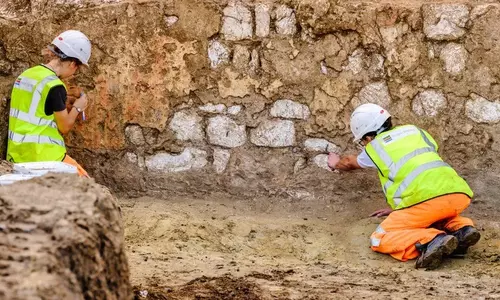Excavations carried out by English Heritage archaeologists at the site of southeast England’s Richborough Roman Amphitheater have unearthed a cell where gladiators, prisoners, and wild animals may have been held before performances and executions, according to a BBC report.
Animal bones, coins, and pottery in the area suggest the Roman town was inhabited until the end of the Roman occupation of Britain in the fourth century.
As many as 5,000 spectators could be seated in the chalk and turf amphitheater, thought to have been built in the first century A.D. Traces of paint indicate the structure was painted red and blue. The skeleton of a cat, named “Maxipus” by the researchers, was buried on the edge of a ditch outside the amphitheater.
The find comes 172 years after Richborough Roman Amphitheatre, near Sandwich, Kent, was first uncovered.
The discoveries have provided further evidence that Richborough was one of Roman Britain's most important sites, the BBC report said.




















